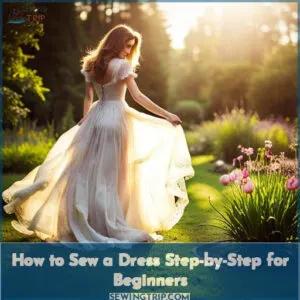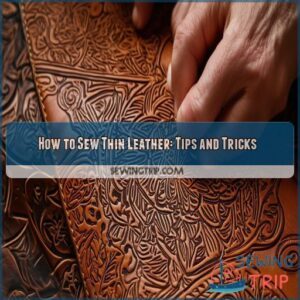This site is supported by our readers. We may earn a commission, at no cost to you, if you purchase through links.
From time to time, I such as to pause from my normal sewing jobs and make something various and also unique. Or I switch over to knitting or crochet. It aids me to charge my batteries and proceed my collaborate with new interest as well as vigor. Whatever the motivation, it is good to handle some flexible jobs. A kilt is a fantastic suggestion to attempt something various. So, today, I will certainly reveal you exactly how to make a kilt It will be a basic guide, despite the fact that kilt -making can be way more intricate. But, I believe that the initial effort should be less complicated unless you are a specialist. In which instance you don’t require a guide anyway.
A kilt is a conventional item of clothes of Gaelic men originated in the Scottish Highlands While we relate it to Scottish and a bit much less to Irish people, it came to be a brand and motivation worldwide. You can discover kilt fans among style developers, hipsters, as well as people who wish to really feel various or simply to draw focus. Many of the nations have some traditional garments, however none of them can match the popularity of the kilt I can not actually discuss the appeal of the kilt Perhaps it’s the uncertainty of it. Is it a uniform, a heritage outfit, or a garment? It appears like the lady’s skirt, yet it communicates a message of macho honor. Whatever the reason, the kilt is below to remain. So, allow’s see exactly how to make an entry design.
Table Of Contents
Just how to Make a kilt
Step 1. Pick Your Tartan as well as Take Your Measurements
You will require a great deal of material. Typically, the width of kilt different and also the specialists disagree on ‘real’ dimensions. For your initial kilt, 4-yards will certainly do. Yet, prior to you start working you require to take your dimensions. Step your waistline as well as distance between midsection and knee. Traditionally, a kilt need to cover one-third of your knee.
Step 2. Making the Pleats
There are two typical styles of pleats. You can pleat a kilt ‘to the sett’ or ‘to the stripe’ There are numerous distinctions in between these styles, but primarily pleating to the sett mimics the pattern of the tartan as well as it looks virtually the same on the front as well as on the back of the kilt When pleating to the stripe, the pattern on the back of the kilt is different from the pattern on the front. Pleating to the sett is a risk-free alternative, due to the fact that every tartan looks great pleated to the sett, while some tartans aren’t ideal to be pleated to the red stripe.
The initial section of your textile will go from your left to your appropriate hip, so you leave this part unpleated The size of this component must be half of your waistline. Then, you begin pleating. Fold around 6 inches of your textile below itself to the right side. Different tartan patterns or ‘setts’ have various widths so you do not fold precisely 6 inches. Rather, you follow your pattern to ensure that each pleat looks the very same. When you fold up the following 6 inches or two, you fold it to ensure that 1.5 inches of the previous pleat is cost-free as well as noticeable. Repeat the procedure, up until you have regarding 20 inches of pleats or the very same length as the apron (the very first section of your kilt.
Step 3. Ironing and also Pinning
As soon as you have actually pleated the desired width check out if the pleats are excellent. After that iron it in the instructions of the pleats. Beware while ironing since if you disrupt the pleats you will have to do it all over once more. Currently, it’s time to pin it in order to prepare it for sewing You will need two pins for each and every pleat. Make 2 rows of pins The first row should go along the top of the textile, well, 1 inch from the top to be exact. The 2nd row ought to go 6 inches from the top.
Action 4. Embroidery the Pleats
Now, it’s time to utilize your embroidery equipment. Sew a straight stitch across the whole width of the pleats following your pin rows.
So, it indicates that you stitch one inch from the top while getting rid of one pin at a time. Comply with the very same treatment on your 2nd row of pins Now, it virtually looks Scottish.
Action 5. Trimming as well as Fastening the Kilt
Your kilt is practically done Look into the measures once more and also remove excess fabric if there’s any type of. Cut the fabric from the back of the pleats to stay clear of large waistline. Avoid the very first and the last pleat and remove the textile from the waist to the hipline on continuing to be pleats.
As for attaching, you can add straps and also buckles or hooks and also eyes, however the easiest way is to utilize Velcro. It is not conventional, however it is sensible, economical, and also simple to do
There you go! Get a sporran as well as a bagpipe as well as you prepare to go to a Renaissance Fair or any type of Scottish celebration.
Final Words
Reality is told kilt -making is a form of art. There’s so much tradition behind it also. Each tartan pattern tells a story. Commonly, each kilt must be hand-made. There are practically many policies that specify the ‘real’ kilt However, it can all be frustrating for novices, especially for those who do not have Scottish beginnings.
This guide is suggested to assist inexperienced exists or people that need to make a kilt on brief notification I recognize that true kilt maker would never ever make this simplified version of the kilt Still, I think that we do not need to adhere to the custom rigidly. Besides, making any type of type of kilts commemorates the Scottish society. And when you get accustomed to the kilt and also kilt -making process, opportunities are you will be making even more sophisticated kilts in the future. Anyhow, welcome to the globe of Gaelic heritage and enjoy it!
- doyousew.com







